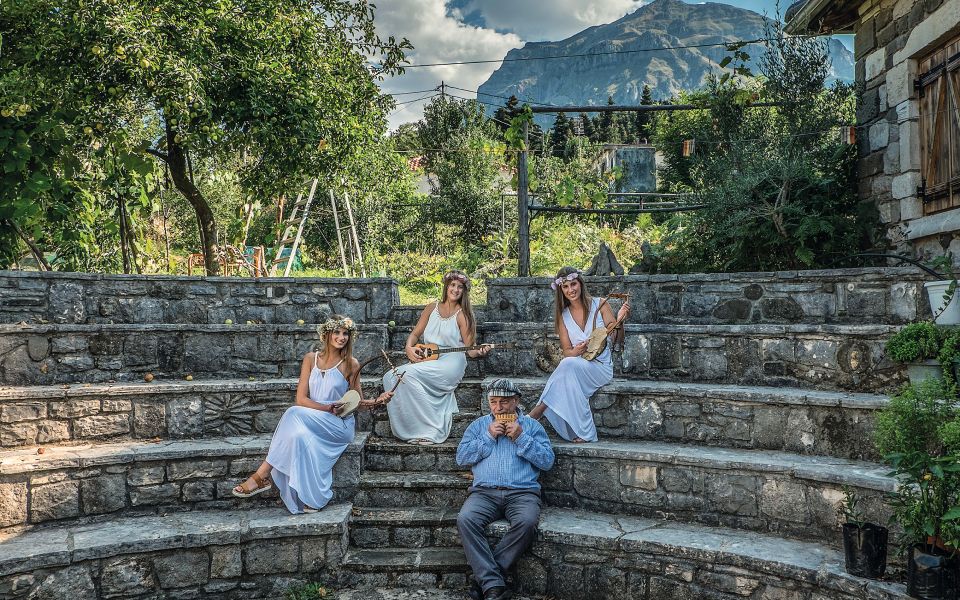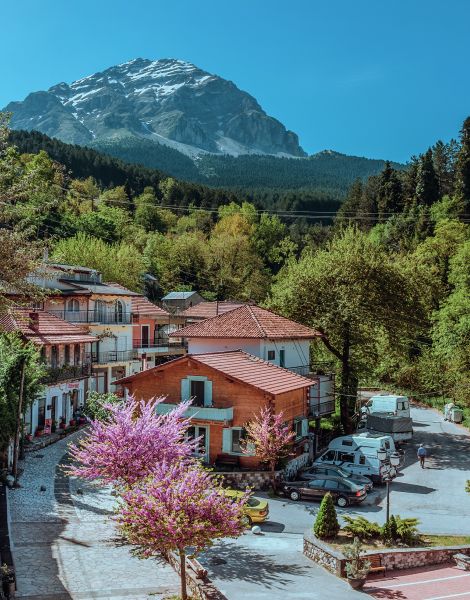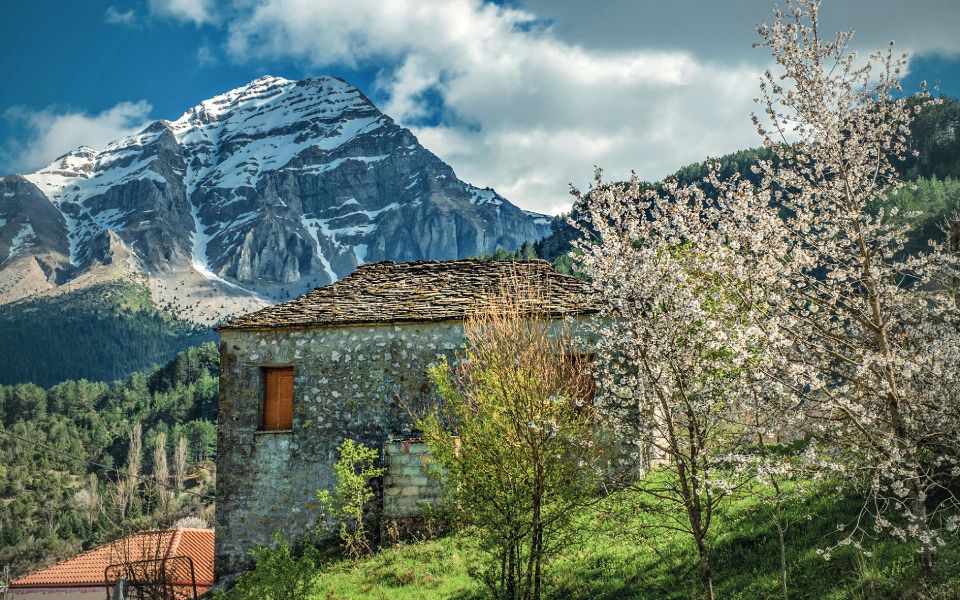It’s been a whole year, a very strange year in fact, but if I concentrate, I can remember what happened here last summer in detail. It’s July 26, 2019, the feast day of Saint Paraskevi, and dawn finds me in the main square of the village of Pramanta, kneeling at the historic Arapis fountain, trying to quench my thirst after a night ascent under the stars. I’m in the area called Tzoumerka, my home region, on the majestic mountain slopes of my grandparents.
The lively center of this region, the village of Pramanta is built amphitheatrically at an elevation of 860m at the foot of imposing Mt Strongoula. The morning mist gradually clears, as too does the fog of my thoughts. And how could it be otherwise when I’m breathing the same clean air that nurtures – together with the waters of the Arachthos River – these untouched Epirus forests? I gulp in deep breaths of life, which bring with them wonderful memories.

© Vangelis Giotopoulos
In the summers I spent in the village as a child, there was no firm concept of time, neither hours nor days of the week, just the morning, the midday rest and the evening. The only time we showed interest in a particular day of the month was in the case of a local festival, which we eagerly awaited.
Looking back, I remember how the summer presented me with a palette of warm colors, sounds, aromas and fragrances. On the high peaks, though, it was always still springtime, with gurgling streams and mountain springs everywhere, some hidden and others visible. Rivulets cut through patches of snow that refused to melt and brooks fed by spring water meandered through the meadows, forming small ponds. Wildflowers in full bloom, broad sheets of different colors, created an alpine atmosphere framed by rocks and yet more rocks with imposing vertical faces. Even today, the only inhabitants of these remotest parts of Greece at the heart of the mountain range are wild goats, wolves and bearded vultures.
I pause for a little under a plane tree that is more than 100 years old; it’s where my grandfather would bring me to play when I was a child. He would sit at the coffee shop, sipping his tsipouro (a strong local spirit) and playing cards with fellow villagers, supposedly keeping an eye on me; it could have only been one eye, because the other was firmly fixed on his hand. As the game progressed, they’d constantly tease each other and make small talk. The plane tree is so enormous that its branches are intertwined like massive hands and its deep shade covers the entire square. For many decades, the tree has provided a cool respite from the hot summer sun for passing merchants, travelers and sightseers.

© Vangelis Giotopoulos

© Vangelis Giotopoulos
It’s still early and that same coffee shop has not yet opened. It remains as it was then, with its weathered wooden sign, small wrought-iron tables and 01 02 wicker chairs. I am waiting for Mr. Yiannis (my father’s third cousin or something of the sort) to arrive so that I can enjoy a double helping of his lovingly prepared Greek coffee. Less than half an hour later, I see him slowly making his way up the cobblestone alley in the trademark woolen flat cap that he wears all year round. “Good morning. Isn’t is a bit early for you, Nikola?” he asks. “I’m not used to you coming at this time…”
The aroma of the freshly brewed coffee mingles with the morning mountain breeze. After I tell him all about my nighttime exploits, he says: “Wait a little and I will bring you some spaghetti pie to keep you going.” Savory pies have always been the backbone of Epirus cuisine, and they hold pride of place in the gastronomic tradition of Tzoumerka. I remember the ones that my grandmother made; she would wrap them for me to take on my first ventures into the mountains when I was just a schoolboy. Her specialties were blatsaria (a type of vegetable pie with wild greens and feta cheese) and pies made with trachana (a fermented mix of grain and dairy).
The renowned Greek chef Alexandros Giotis, who has recorded 178 different pie recipes, notes: “The pie of Epirus is both bread and meal, main dish and accompaniment, for it is the key component in the diet of the nomadic herders, the Vlachs and the Sarakatsani.”

© Vangelis Giotopoulos
My train of thought is interrupted by Mr. Yiannis. “Eat up and get some sleep because this evening, outside the church after vespers, it’s the festival,” he says. Indeed, a big day and a big night do lie ahead. The annual feast is celebrated with dancing, live music featuring the clarinet and other traditional instruments, and unforgettable Epirus delicacies and local meats. All of this is accompanied, of course, by plenty of tsipouro and by wine made from Isabella grapes (a cultivar that originated in America and is highly valued in the region), at first slightly sweet to the palate but with the aftertaste of a dry wine. In terms of aroma and flavor, both beverages are quite unique.
The following morning the villagers honor the custom of Kangelaris. Without any musical accompaniment, children and adults gather in the square to form a long chain by interlocking elbows and holding each other’s hands, fingers entwined. They then begin to dance while singing traditional songs that exalt the Orthodox religion, tell of the hardships of emigration, and laud the heroes of the struggle for liberation waged against the Ottoman Turks. These songs are part of the local culture; the lyrics are passed down unchanged from generation to generation. The dance is led by men dressed in traditional costume, followed successively by the elderly, young males, women and children. As the dance progresses, the chain becomes longer and longer until it fills the entire square.
This year, there won’t be a festival, but I’m sure we’ll have one next July. Up here in Epirus, in the mountains of the north, you find a part of Greece that’s deeply committed to its traditional culture. It’s a place that will fill you with optimism, inhabited by kind, hospitable people who have each walked a separate path in life, paths connecting the past with the present and showing us new routes into the future. No one typifies this more than the great Ioannis Tsamakos, known as “the Eagle of Tzoumerka,” the legend of Greek mountaineering, who was still climbing in his nineties.












